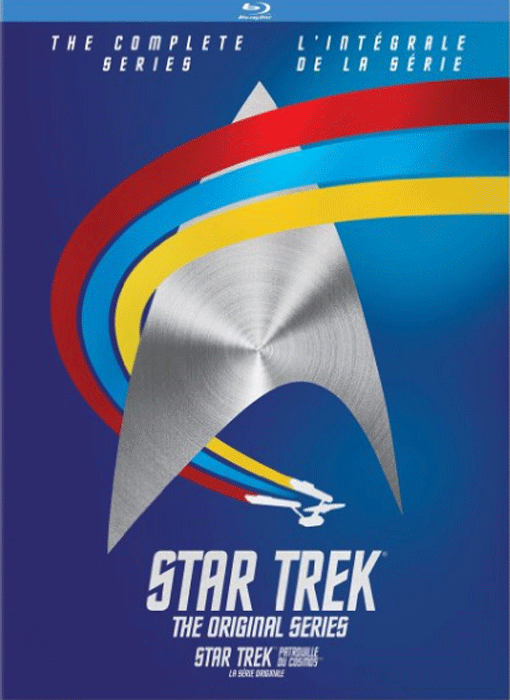It's been five years since I last rewatched the entirety of TOS.
Funny, but it doesn't seem that long ago.
At any rate I recently purchased the recent reissue of TOS on Blu-Ray: https://www.amazon.ca/gp/product/B01CJX3WGE/ref=oh_aui_detailpage_o00_s00?ie=UTF8&psc=1 And I find myself curious as to how this will look on my Samsung 50in. LED television. I already had all of TOS on DVD which I purchased when the clamshell sets were first released. I enjoyed on DVD as it presented the series unlike I had ever seen it before. The DVDs gave me a crispr and more detailed image unlike I had ever experienced with the series before and yet it didn't reveal too much so as to detract from the experience. So the series on Blu-Ray should be interesting.

One thing I can say about the new Blu-Ray set: I'm not happy with the packaging.
I've seen this sort of thing before. Is it so hard to design a simple, sturdy and secure holding case? The discs are held by pins which allowed three of the discs to get loose while being shipped. They don't look scratched or damaged, but I'll have to see. But another issue is that the holder that all the discs fit to isn't sized properly to fit and fasten securely into the case. It is loose within the case which can contribute to discs coming loose from the holder.
One thing than can be said for the DVD clamshell sets. They were a lot more snug fitting and secure.
I am debating whether to watch the original versions of the episodes or TOS-R. I'm also presently finishing up my rewatch of another series wherein I will get into the TOS set.
Funny, but it doesn't seem that long ago.

At any rate I recently purchased the recent reissue of TOS on Blu-Ray: https://www.amazon.ca/gp/product/B01CJX3WGE/ref=oh_aui_detailpage_o00_s00?ie=UTF8&psc=1 And I find myself curious as to how this will look on my Samsung 50in. LED television. I already had all of TOS on DVD which I purchased when the clamshell sets were first released. I enjoyed on DVD as it presented the series unlike I had ever seen it before. The DVDs gave me a crispr and more detailed image unlike I had ever experienced with the series before and yet it didn't reveal too much so as to detract from the experience. So the series on Blu-Ray should be interesting.

One thing I can say about the new Blu-Ray set: I'm not happy with the packaging.
I've seen this sort of thing before. Is it so hard to design a simple, sturdy and secure holding case? The discs are held by pins which allowed three of the discs to get loose while being shipped. They don't look scratched or damaged, but I'll have to see. But another issue is that the holder that all the discs fit to isn't sized properly to fit and fasten securely into the case. It is loose within the case which can contribute to discs coming loose from the holder.
One thing than can be said for the DVD clamshell sets. They were a lot more snug fitting and secure.
I am debating whether to watch the original versions of the episodes or TOS-R. I'm also presently finishing up my rewatch of another series wherein I will get into the TOS set.
Last edited:
